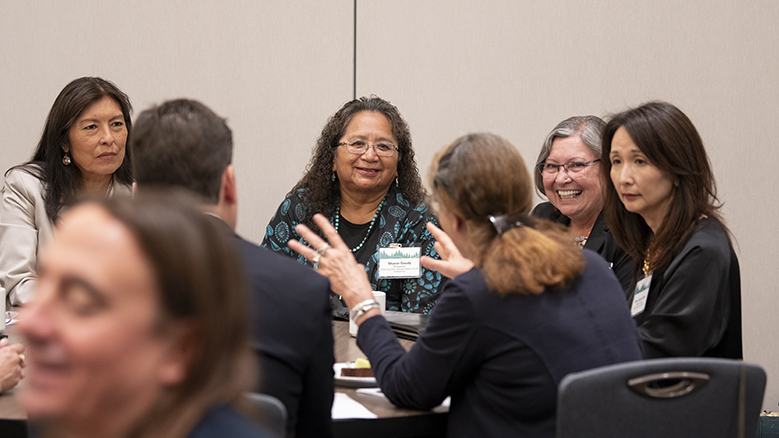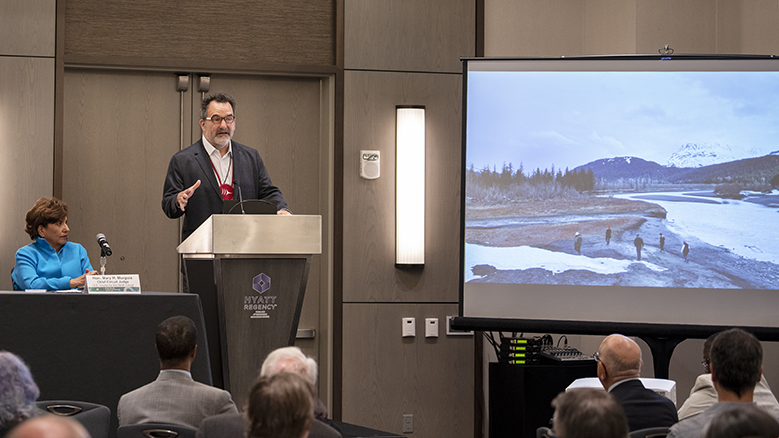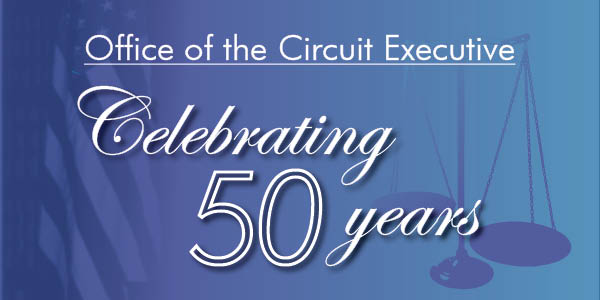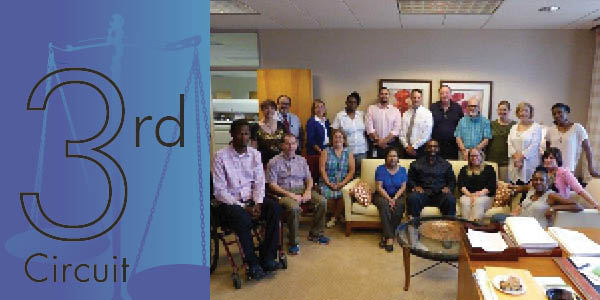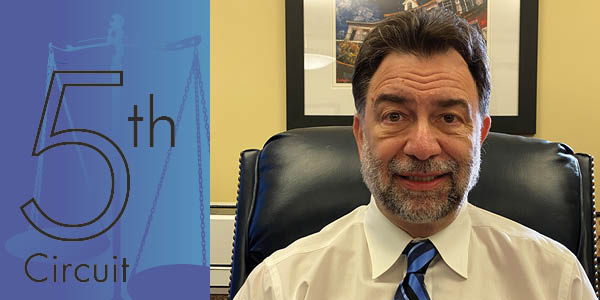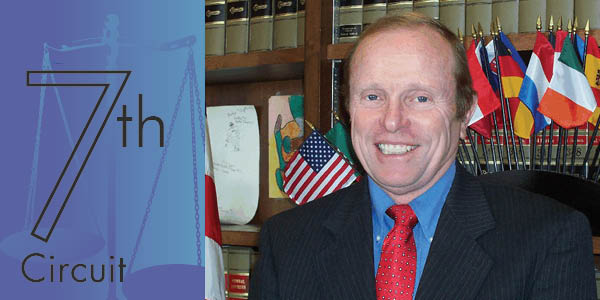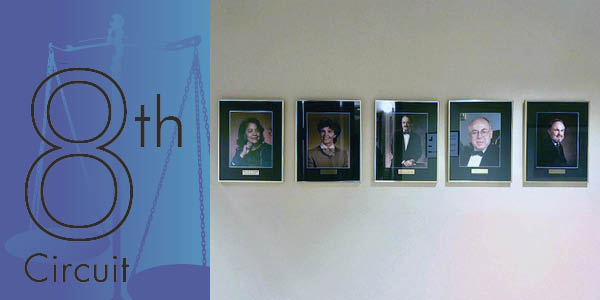
|
Tribal Judges and Leaders from the Northwest Meet with U.S. Supreme Court Justice Elena Kagan and Ninth Circuit JudgesOct. 3, 2023 <!-- A congenial and upbeat meeting among Native American tribal representatives and an array of judicial representatives, including U.S. Supreme Court Justice Elena Kagan and Ninth Circuit Chief Judge Mary H. Murguia, took place at the Ninth Circuit Judicial Conference on Aug. 2, 2023. The one-hour session included the executive board of the Affiliated Tribes of Northwest Indians (ATNI), including Leonard Forsman, president; 10 tribal judges, almost all of them chief judges; and 32 U.S. district judges, including chief judges, and U.S. District Judge Diane J. Humetewa, District of Arizona, the first Native American woman to serve as a federal judge. Judge Humetewa is chair of the Ninth Circuit’s Ad Hoc Committee on Tribal and Native Relations (TNR) and led the effort to arrange the meeting. “The Ninth Circuit has by far the largest populations of indigenous peoples and Indian nations as compared to other circuits in the nation,” said Judge Humetewa. “Eighty percent of Indian Nations’ tribal population is within the 15 districts of the Ninth Circuit. As one of the objectives in the TNR committee’s charter states, we seek to better understand the common concerns related to judicial functions and open communication. For many years there have been state and tribal court forums which were meant to foster respect for jurisdictions and to understand the jurisdictional overlap. It makes sense to achieve this on the federal level given our similar overlapping jurisdictions.” “Considering the significance of advancing the administration of justice in Indian Country, Judge Humetewa and I agreed that this meeting would be an important, beneficial, and timely opportunity for judicial colleagues to meet tribal leaders. It was an honor for me to be a part of this unique event,” said Chief Judge Murguia. The program started with a half hour of tribal leaders and judges mingling. Chief Judge Murguia then introduced Justice Kagan, who addressed the group. Forsman introduced the executive board and tribal judges and leaders and gave a presentation on the history of the ATNI. “A common theme in the remarks was the importance of clear and effective communication between the tribal and federal courts as they each do the work of providing justice and exercising jurisdiction in their respective communities,” said Forsman. “Another common theme was a shared interest in meeting more regularly in the future,” he added. “All of us on the ATNI executive board are pleased to have the opportunity to meet with the federal judges to begin what we hope will be regular contact between the tribal and federal courts, as we all try to meet the needs in our communities and learn more about each other. Everyone came to the meeting hoping that this would be the beginning of a longer collaboration. I think we accomplished that. Time will tell how frequent those meetings will become, who they will be with and how productive they will be. But we are optimistic that we can work together in the years ahead.” “We are in many ways the adjudication body for Indian Country but (courts are) so far removed from communities, it adds a layer of complexity to what justice looks like to the involved offenders, victims or their families’ lens,” said Judge Humetewa. “Juries are often not representative due to the geographical distance between the community and the court, and the affected communities are often unaware of the outcomes. “Justices and judges often travel to learn about European and state courts, and it makes sense for us to do the same with tribal justice systems. We acknowledge the need to invite our tribal judge counterparts to our courts, and we hope this meeting lays the foundation for future work and, eventually, visits by justices to the tribal lands,” she finished. # # # |
||||


